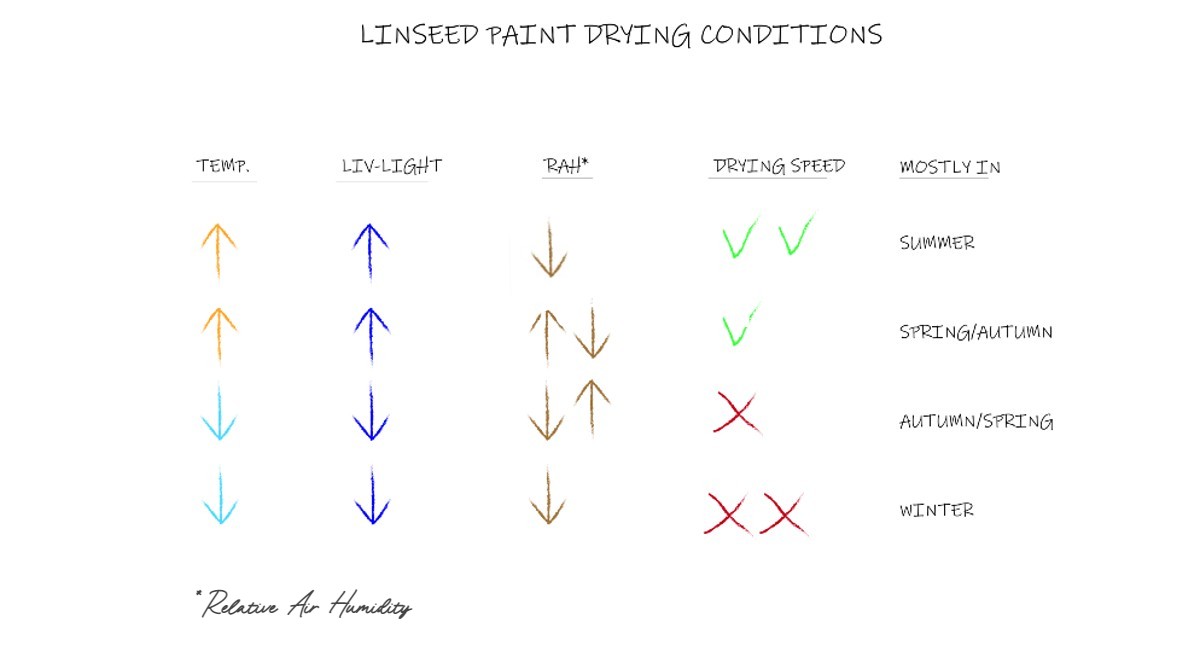
We often get asked if there is a minimum temperature for painting with Exterior Linseed Oil Paint. In theory there isn’t a minimum temperature, the main factors that inhibit painting are humidity, moisture in the wood (or on the surface you are painting) and UV light. The best conditions to paint in are when the humidity is low, the timber is dry and there is no dew on the surface you are painting, along with good UV light (sunlight) that is needed to dry and fully cure the paint.
So, the autumn and winter months are not the best time of year to paint when the days are normally shorter, colder and there is more moisture in the air and on or within the surfaces you are painting. However, you may be in a location where even though the temperature is low, the humidity is also low with little dew and there is good UV light in which case you should be able to paint but drying times will be longer than normal. Another scenario is if you paint indoors where the temperature is higher, it’s dry, in the air and on the surface of what you are painting, but there is a lack of UV light – again you can paint but it will take much longer to dry and fully cure.
All is not lost though, if you can get the primer coat on then this will protect external timber until the weather picks up in the spring when you can apply further coats. Always apply linseed oil paint in thin coats – one of the main causes of prolonged drying (whether the conditions are ideal or not) is because the paint has been applied too thickly.

